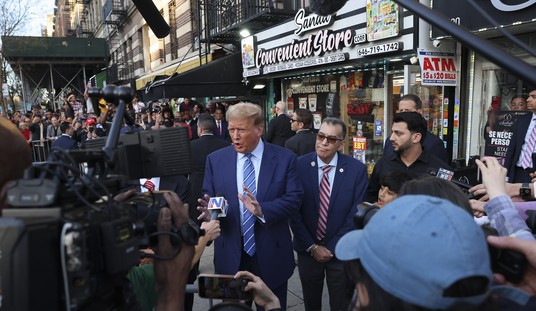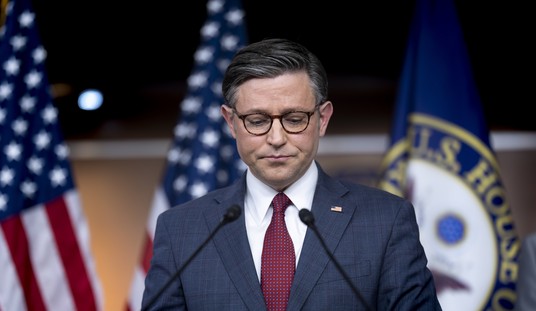You probably know this line by heart by now; Obama saying we're not a collection of red states or blue states, we’re the United States (I’m paraphrasing). Yet, we all know that’s bologna. Red states and blue states have different values, different views on government, and different attitudes towards America’s role in the world. To put it in another way, it’s the urban-based elite vs. the rural American.
No other president has accentuated such divisions as Barack Obama. That’s fine; I’m a fan of partisanship and government gridlock–our rights remain safe when government does next to nothing. But, another area where such divisions are shown is in state budgets, where red states have been the victim of disproportionate cuts in federal grants compared to that of their blue state neighbors (via Reuters):
Between the 2009 and 2013 fiscal years, funding for a wide swath of discretionary grant programs, from Head Start preschool education to anti drug initiatives, fell by an average of 40 percent in Republican-leaning states like Texas and Mississippi.By contrast, funding to Democratic-leaning states such as California and politically competitive swing states like Ohio dropped by 25 percent.
Though Congress sets overall spending levels, the Obama administration determines where much of that money ends up. Lawmakers also have curtailed their ability to direct money to their home states when they adopted a ban on spending in 2011 known as "earmarks."
That has given administration officials more power to steer money to places that might return the favor with votes, said John Hudak, an expert on federal spending at the centrist Brookings Institution who worked with Reuters on the analysis.
"In the context of the Obama administration, swing states and blue states are doing better than red states," said Hudak, who uncovered similar spending patterns by previous presidents in his book "Presidential Pork."
"I would suggest these numbers would tell us there is politicization going on," he said.
For the analysis, Reuters divided the U.S. into three categories: Republican-leaning "red" states where Obama got less than 45 percent of the vote in the 2012 election; competitive "purple" states where he won between 45 percent and 55 percent of the vote; and Democratic-leaning "blue" states where he won more than 55 percent of the vote.
Red, purple and blue states have all shouldered steep spending cuts after a 2011 budget deal, the analysis found. But those cuts have not been doled out evenly.
Discretionary grant funding to red states like Mississippi fell by 40 percent to $15 billion between fiscal 2009 and fiscal 2013, the most recent year for which reliable figures are available. Purple states like Ohio and North Carolina saw a smaller drop of 27 percent, to $19.8 billion, and blue states saw a yet-smaller drop of 22.5 percent, to $27.6 billion. (The tally does not include disaster aid handed out after Hurricane Sandy, which went largely to blue states like New Jersey.)
The disparity doesn't show up in payments like Medicaid that are distributed through pre-set formulas.
Recommended
There are other factors. The article noted that states could poorly write grant proposals; an oil-rich state might not feel the need to ask for green energy grants. Still, it doesn’t account for such a large gap. Hudak ran the numbers again using the differences in population, the amount of infrastructure, hospitals, institutions of higher learning, and changes in population and the economy; the red states still got the short-end of the stick:
After 2011, the average red state got 15 percent fewer grants and 1.3 percent fewer grant dollars than the average swing state. That comes out to roughly 500 grants and $15 million for an average-sized red state like Tennessee - enough to pay for 115 additional police officers or upgrade a rural airport to handle larger planes.
Reuters mentioned that this isn’t new; both sides have played political games with discretionary grants. They also said the Obama administration didn't explain why red states were disproportionately affected, and that several Democrats refused to comment. One reason for the disparity could be with members of Congress, who lost their ability to influence the flow of money thanks to the earmark ban. The ban was a Republican idea after retaking the House in 2010. As Ed Morrissey wrote over at Hot Air, while the idea of banning earmarks isn’t necessarily a bad thing; its detractors were right about one consequence of this action:
Legislators warned repeatedly about disarming themselves in terms of directing federal funding, especially Republicans after Barack Obama won the Presidency. Taking away earmarks, they argued, forced them to give Obama administration a limited blank check – block funding for federal agencies with little or no control over how the funds actually got spent, and where.
I agree with Ed that the only way to fix this is to rein in the federal government, and have a president who basically respects the concepts of federalism–and the balance of power.

























Join the conversation as a VIP Member